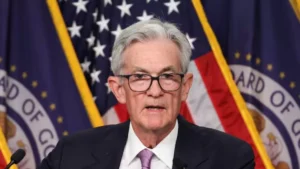
The Federal Reserve announced that it will maintain its current interest rates, a decision that comes amid growing concerns over the U.S. economy’s uncertain trajectory. The move signals a cautious approach as the central bank continues to balance economic growth, inflationary pressures, and the lingering effects of global economic disruptions.
Why the Fed is Holding Rates Steady
The decision to keep interest rates unchanged reflects the Federal Reserve’s assessment of the current economic landscape. While inflation has remained elevated, the U.S. economy has shown signs of slowing in certain sectors, such as housing and consumer spending. By holding rates steady, the Fed aims to support economic activity without further fueling inflation, which has been a key concern for both policymakers and the public.
One of the primary reasons for this decision is the Federal Reserve’s dual mandate: to promote maximum employment and ensure price stability. While the labor market remains robust, with unemployment hovering near historic lows, the risk of an economic slowdown has made the Fed cautious about raising rates too aggressively. Doing so could stifle growth and push the economy into a recession.
Global Economic Concerns
Another factor influencing the Federal Reserve’s decision is the uncertain global economic environment. Ongoing geopolitical tensions, particularly in Europe and the Middle East, have caused disruptions in energy markets and contributed to rising costs for goods and services. Additionally, the lingering effects of the COVID-19 pandemic continue to weigh on global supply chains, creating uncertainty in markets.
The Fed must also consider the impact of its policies on international markets. A rate hike in the U.S. could lead to capital flight from emerging economies, exacerbating global financial instability. As such, the central bank’s decision to hold rates is a signal to global markets that it is proceeding with caution in these turbulent times.
What It Means for Consumers and Businesses
For consumers, the decision to maintain interest rates means that borrowing costs for mortgages, auto loans, and credit cards will likely remain stable in the near term. However, with inflation still a concern, the cost of goods and services may continue to rise, squeezing household budgets. For businesses, particularly small and medium-sized enterprises, the Fed’s decision provides some stability in terms of borrowing costs, allowing them to plan for the future without the immediate threat of higher interest payments.
The Federal Reserve’s approach will be closely monitored in the coming months, with markets expecting further guidance on whether future rate hikes are likely. The central bank has indicated that it will remain data-dependent, meaning that upcoming economic reports, particularly those related to inflation and job growth, will play a key role in shaping monetary policy.
Conclusion
The Federal Reserve’s decision to hold interest rates steady amid economic uncertainty underscores the delicate balance the central bank must strike between fostering growth and controlling inflation. As the U.S. economy faces both domestic and global challenges, the Fed’s cautious approach provides temporary stability, but future rate decisions will depend on the evolving economic outlook.
image source – AP


